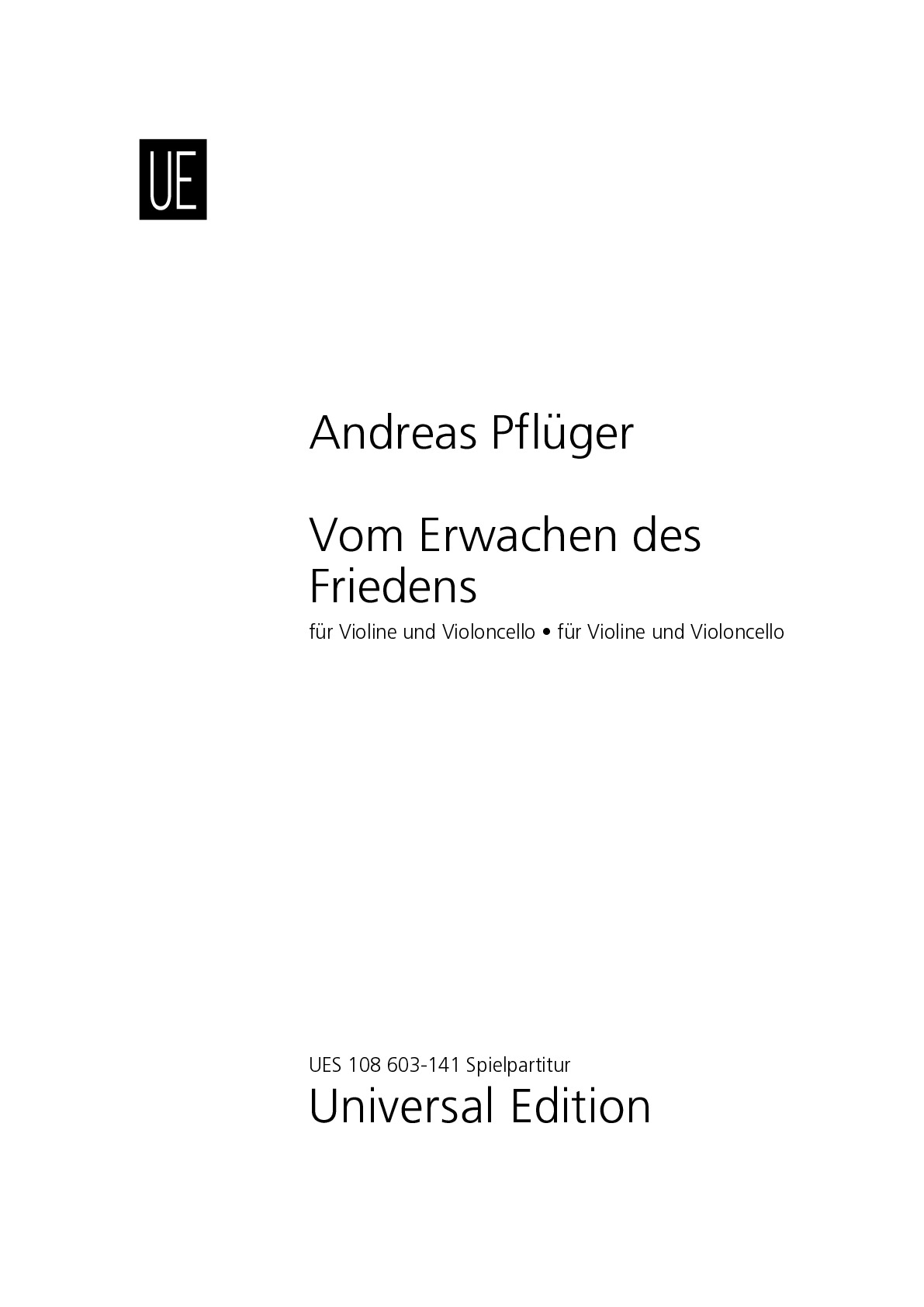

Andreas Pflüger
Vom Erwachen des Friedens
Duration: 12'
Instrumentation details:
violin
violoncello
Vom Erwachen des Friedens
Translation, reprints and more


Andreas Pflüger
Violoncello (Vom Erwachen des Friedens)Type: Stimme
Sample pages
Audio preview
Video
Work introduction
The five-movement duo ‘Vom Erwachen des Friedens’ for violin and cello is a musical journey that depicts the process of achieving peace in all its facets: from the search and restlessness, through moments of seeking and doubting, to finding harmony and a bright new beginning. Each of the five movements highlights a different phase of this awakening, interweaving the voices of the violin and cello into a powerful narrative.
The work begins with a fragile, searching dialogue. The cello's deep, dark sounds set the tone for a restless atmosphere, while the violin ventures forth tentatively with fragile melodies. This initial tension reflects the insecurity and fragility of a moment when peace is only dreamed of, not yet realised.
An intense exchange develops between the instruments. Conflicts and contrasts become audible, but so do the first moments of dialogue, harmony and inner reflection. The themes become increasingly interwoven, and the two voices begin to complement each other, finding a new musical language together.
The finale radiates hope and confidence. Soft, floating tones and warm harmonies allow peace to ‘awaken’. The violin and cello, which initially seemed to be in opposition, now play in unison – not just alongside each other, but with each other. This final section symbolises the strength of peace, which arises from the interaction of different forces and perspectives.
‘Vom Erwachen des Friedens’ is not just a musical work, but a message: it invites us not to take peace for granted, but to understand it as a living, fragile process – one that we must shape together. The duo, through its reduced instrumentation, underscores the intimacy of this message and touches audiences on the deepest emotional level.
1. In Search of
The first movement opens with a dark, tense soundscape. Sharp contrasts, dissonant intervals and fragmentary melodies reflect the conflict and inner turmoil. The two instruments sound like voices talking at cross purposes, evoking the uncertainty of a new beginning.
2. Dialogue
In the second movement, a lively exchange unfolds between the instruments. Sometimes playful, sometimes serious, they engage in a dialogue that resolves conflicts but also builds bridges. This movement embodies the process of negotiation and understanding.
3 Inner Reflection
This movement is characterised by a calm, meditative atmosphere. Slow, drawn-out phrases and warm harmonies invite reflection. The music conveys the feeling of pausing and creating space for forgiveness and healing.
4 Awakening
A powerful, moving movement characterised by rhythmic energy and rising tone sequences. Violin and cello find a common pulse that conveys hope and determination. The music pushes forward and symbolises the power of a new beginning.
5 Wake up to peace
In the finale, the voices of the violin and cello unite in a radiant, harmonious soundscape. Broad melodic lines and luminous chords convey a sense of completion and peace. The movement ends in a soft, gentle fade-out, indicating that peace is an ongoing process that must be nurtured.
What is necessary to perform this work?
violin and violoncello
